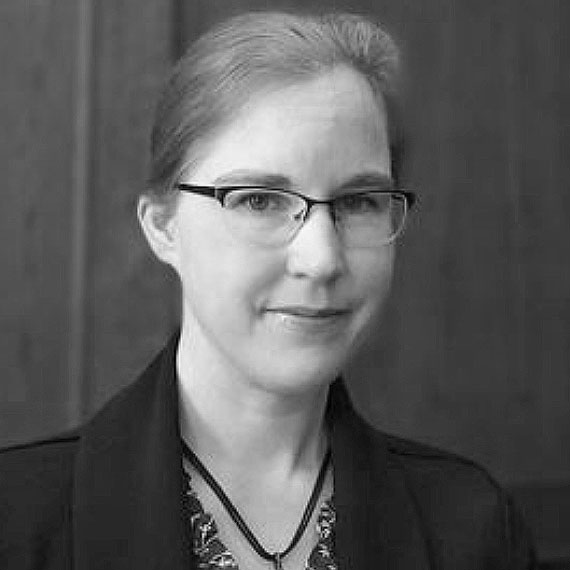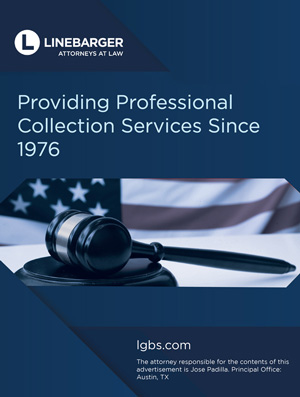
Stacy Worby
State Jury Coordinator, Alaska Court System
- Number of jury trial locations: 40
- NACM member since: 2019
- NACM Early Career Professionals Subcommittee Chair: 2020–present
How did you get started in court administration?
I began my career with the court serving as a clerk in the Anchorage Jury Division. I love working with the public, so it was a good fit. Later, in my capacity as the Anchorage Jury Division supervisor, I had an opportunity to work closely with the state jury coordinator, which sparked my interest in administration. When the state jury coordinator position became open, I applied, and I am so grateful that I did.
Being a court administrator is an extremely stressful job with lots of challenges, filled with good and bad days. How do you go about recharging when you are having a bad day?
If I can make myself leave my desk, taking time for a walk outdoors is always rejuvenating. Working in downtown Anchorage allows quick access to walking trails and beautiful sights. On a clear day, Denali (almost 300 miles away) can be seen, and in the summer the flower displays are absolutely gorgeous. There are no flowers in the winter, of course, but there is something invigorating about that cold air!

Tell us about something that makes your court unique.
The Alaska Court System is a unified court system with 40 locations statewide that summon jurors. Unlike courts who compile their master list of eligible jurors from voter rolls, motor vehicle licenses, etc., Alaska’s juror list is pulled yearly from the list of residents who apply for the Alaska Permanent Fund Dividend. Since “free” money is involved, people are motivated to apply yearly and keep their contact information current. This keeps our rate of undelivered summonses low.
Some of our jurors live in communities far from their assigned court and travel to the court by plane, boat, or sometimes even by snow machine (that’s a snowmobile for the non-Alaskans) to fulfill their jury service. A local artist, Duke Russell, created a great juror appreciation poster reflecting the creative ways jurors make their way to court.
What are the challenges with holding jury trials during the COVID-19 pandemic?
With so many diverse jury trial locations across the state, the challenges with bringing jurors to court during the pandemic are varied. Many courts are small and do not have sufficient room to allow for social distancing. Some communities have travel restrictions in place, requiring jurors who must fly to the court to quarantine before coming to court and after returning to their village.
Keeping the jurors informed of shifting protocols and procedures has been one of our greatest challenges.
What were some of the creative solutions to the challenges?
The challenges have been great, but not insurmountable.
Keeping in contact. The local courts implemented new methods to stay in contact with their jurors and conduct trials. In addition to traditional paper notices, jurors received phone calls, texts, and emails to keep them informed. Courts also kept jurors informed publicly by using announcements on local radio stations and Facebook pages.
Allowing for different ways to appear. Some courts held grand jury hearings via Zoom, providing tablets for jurors to take home if they needed them. One court held grand jury hearings in person at the courthouse using Zoom. Each of the jurors used court-issued tablets to appear from separate rooms in the courthouse. A few trials held jury selection using teleconference or Zoom and had only the seated panel appear in court.
Putting technology to good use. It doesn’t have to be expensive! Our most successful tool was a simple system sending updates and information to jurors via email using mail merge.
We also made made a standard pretrial questionnaire available for jurors to complete online before they were asked to appear for a trial. This allowed for the screening of jurors before they appeared in person.
What have you learned?
I have two simple takeaways from the past two years:
- Make plans, but keep them flexible.
- When new processes are implemented, make sure everyone from the court clerk to the judicial officer is on the same page.
What would you say to someone contemplating getting involved in NACM?
The NACM community is so welcoming. Join and get involved! You’ll make lifelong friends and have professional contacts around the country. I think the best way to connect with other members between conferences is to join a committee.
ABOUT THE EDITOR

Dawn Palermo is the judicial administrator
at Jefferson Parish Juvenile Court, Louisiana.


